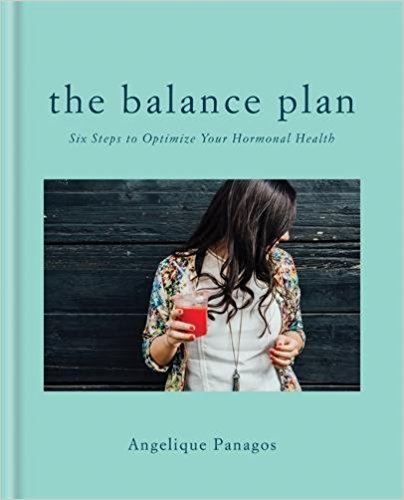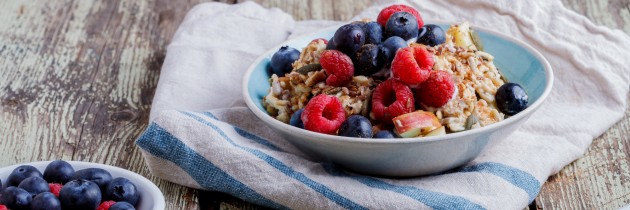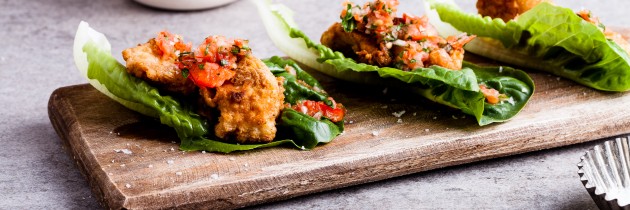How to Build a Balanced Salad
With our sizzling summer well and truly upon us, the next few months are all about al fresco dining, BBQs with friends, and soaking up the sun as we enjoy time outdoors.
While I am a strong advocate for eating salads all year round, with the heat, many of us will also be looking to enjoy lighter dishes and meals – think fresh smoothies, homemade hummus and dips and lots of refreshing, light salads packed with leafy greens.
In fact, summer salads may seem like the perfect healthy meal over the next few months. However, many shop-bought or restaurant salads are laden with unnecessary creamy and sugary sauces and dressings. As with most foods, when it comes to salads, it’s always best to make and prepare your own.
If you have been following along my #angeliqueeats posts on social media you will have seen that salads feature with most of my meals, even breakfast. I have received quite a few messages asking what I put in my salads. So, with that thought in mind, here is my very own ‘Build a Balanced Salad blueprint’on how to make the perfect healthy salad: balanced, delicious and incredibly nourishing, these steps and tips will set you on the right track for all year round salad season!
Creating the Perfect, Balanced Salad
Step One: Choose Your Base
Here is where we can load up on those important, leafy greens. Leafy greens are hormone-balancing, detoxifying, high in fibre and packed with nutrients. Leafy greens make the perfect base for a healthy, homemade and balanced salad. Choose a few large handfuls (per person) of one of the following, or mix them up:
• Spinach: Spinach is nutrient-dense and is packed with vitamin A, as well as vitamins C and K, iron, and fibre. It also contains folate, which helps to support healthy energy metabolism, and produces red blood cells and is important for fertility and during pregnancy.
• Mixed Lettuce: We are truly spoilt for choice when it comes to lettuce varieties. I recommend you try them all!
• Rocket: Peppery rocket is great for adding some firepower to salads. It contains vitamin A, vitamin C, iron, and calcium. In the western world our pallets are more accustomed to sweet-tasting foods so if you find rocket bitter try use alongside handfuls of spinach!
• Watercress: Watercress contains vitamin C (half of your daily allowance can be found in a 2.5 cup serving), as well as vitamins A and K, which helps your immunity, hormones and to build strong teeth and bones. I would recommend having this with a mix of spinach, mixed leaves and kale.
• Radicchio: Beautiful radicchio tastes slightly bitter and and works well with other, more neutral leaves, such as spinach. Radicchio is particularly high in vitamin K, which helps to keep bones strong and healthy, and rich in antioxidants which can fight free radicals.
• Kale: Kale is one another of my ‘detox warriors’ from The Balance Plan and is important in building healthy, happy hormones. It is rich in certain phytonutrients and also vitamins A, C and K, as well as iron, potassium and calcium.
Step 2: Choose 4-6 Veggies
This is where we should reach for the rainbow! The more colour you add to your salad, the healthier and more nutrient-dense it will be. You can also add crunch, texture and even sweetness with your choice of vegetables, as well as a good dose of fibre. Some of my favourites to add include:
• Cucumber for a hydrating, refreshing taste
• Avocado adds a hormone-loving creaminess, with plenty of good fats
• Red, yellow and green peppers – the more colour, the better!
• Tomatoes. Again, why not opt for a mixture of colours by choosing heirloom tomatoes?
• Carrots
• Purple or white cabbage – another ‘detox warrior’, you could try grating together purple cabbage with carrot and adding in some avocado and flavourings to make your own, nutritious ‘slaw’, see the recipe for purple slaw in The Balance Plan
• Onion – you could try spring onion, red onion or classic white
• Olives
• Artichokes
• Cooked broccoli, asparagus or courgette
• Bok Choy which is an Asian green
• Celery
• Chicory for a hydrating crunch
• Fennel – have it shaved or chopped
• Cooked or raw beetroot
Step 3: Choose Your Protein
Perfect for helping to transform your salad into a nutrient-dense meal, a portion of protein will also keep you feeling fuller for longer, ward off sugar cravings (and overcome any blood sugar rollercoasters) and build lean, healthy muscles. Of course, there are plenty of vegan options for protein-packed salads, too! Protein options to try include:
• Cooked chicken or turkey
• Cooked or smoked salmon
• Anchovies
• Sardines
• Mackerel or any fish
• Mixed seafood
• Tinned or cooked tuna
• Boiled eggs
• Cooked beef or steak strips
• Cooked duck
• Chickpeas
• Lentils
• Kidney beans
• Black beans
• Butterbeans
• Mixed beans
• Tofu cubes (organic non-GMO)
• Tempeh (organic non-GMO)
Step 4: Choose Your Complex Carbohydrate
Complex carbohydrates (carbs) are an essential part of a healthy, balanced salad, its all about the right carbs, not no carbs – in a perfect world, we should aim for a portion of protein, good fats and carbs with each meal. By adding complex carbs, you’ll enjoy an energy-boost, as well as a good dose of fibre to support your digestive system and hormones. Carbs will also help to keep you feeling full and satisfied, and will even keep your brain firing on all cylinders. Some of my favourite carbs to add to salads include:
• Protein-packed cooked quinoa
• Brown rice
• Cooked butternut squash
• Cooked sweet potato
• Cooked and cooled new potatoes for some resistant starch to feed your good bacteria (microbiome)
Step 5: Choose Your Seeds
To add a healthy dose of fats to your salad, I always suggest adding a sprinkling of seeds. Seeds and even nuts are a great way to enjoy plant-based fats, including omega-3s such as alpha linolenic acid (these are found in foods such as walnuts, flax and chia seeds). Seeds also contain small amounts of protein, minerals and fibre.
Seeds to include could be:
• Sunflower seeds
• Pumpkin seeds
• Hemp seeds
• Flaxseeds
• Chia seeds
• Sesame seeds
Simply add a tablespoon or two to your salad. For an extra hit of flavor, you could always try roasting your seeds in spices or flavourings – I love mine roasted in a drizzle of tamari.
Step 6: Choose Your Dressing
Salad dressings tie the whole dish together, adding flavour and freshness. However, it can also be a downfall if you want to keep your salad healthy –many shop-bought dressings should be avoided due to their refined oils, sugar and additives.
However, a delicious dressing is easy to make at home. You could try:
• Add a drizzle of olive oil and balsamic vinegar, to taste
• Mix olive oil with freshly-squeezed lemon juice
• This recipe for my Homemade Salad Dressing is full of flavour, and makes a great accompaniment to salads. It’s also brilliant for the digestive system
• Have a look at The Balance Plan for my creamy salad dressing
• A blob of mayo, this is my favourite
You could also opt for homemade hummus or even guacamole in place of a dressing.
Step 7: Added Extras
If you really want to shake up your salads, try adding some fresh fruits for a burst of sweetness.
Some fruits to try include:
• Pomegranate, which tastes delicious with goat’s cheese or quinoa, try my spring quinoa and pomegranate salad
• Strawberry which works brilliantly with avocado and chicken, have a look at my Summer strawberry and chicken salad
• Blueberries
• Apple slices
• Orange or clementine segments, would work well with duck salad
• Mango
And some added fresh herbs for an extra boost of nutrients.
Herbs to try:
• Basil
• Mint
• Coriander
There you have it, your own ‘Build a Balanced Salad blueprint’ to get you started. I really hope you find this helpful and I would love to see your salad creations so be sure to tag me in your social media posts.
*Fibre – a word on fibre – it’s important for digestion, hormonal health and health in general and research is showing that we are lacking in fibre, so increasing it would be beneficial. But we are all biochemically individual and for some the addition fibre (or any fibre) causes bloating and digestive complaints. If you find that this happens to you please book in to see your GP to discuss as soon as possible and come and see me in clinic to work on the possible underlying causes.
Looking for more recipes? We are always busy developing new recipes so Join my Health Tribe to make sure you’re the first to hear all about them!
I wish you good health!
Consult your doctor or health care practitioner regarding any health problems, before embarking on any new health regimes, using any supplements or before making any changes in prescribed medications or food programmes.













